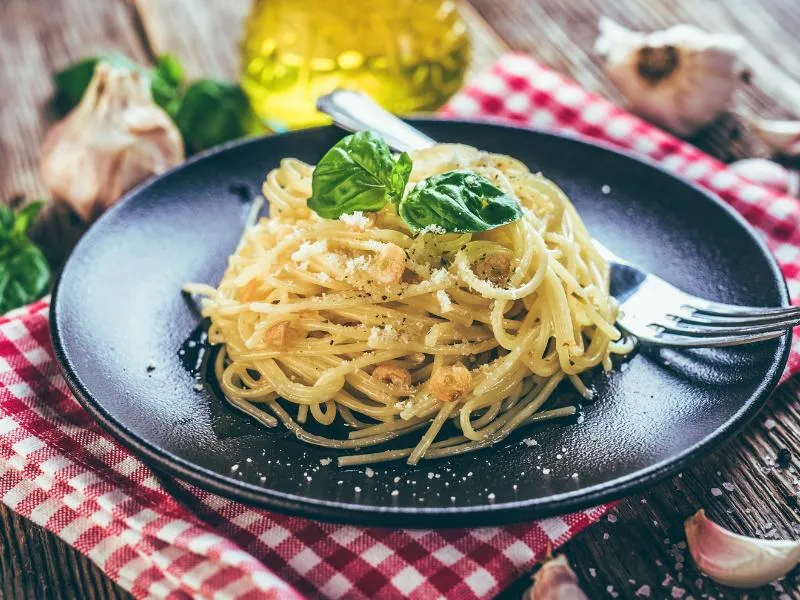Spaghetti Aglio e Olio
Simple yet flavorful pasta with garlic-infused olive oil, chili flakes, and fresh parsley.
👉 View Authentic Recipe 👈
About This Dish
Spaghetti Aglio e Olio is one of Italy’s most beloved and fundamental pasta dishes, originating from Naples in the Campania region. Its elegance lies in its simplicity, requiring just a handful of quality ingredients: spaghetti, extra virgin olive oil, fresh garlic, peperoncino (red chili flakes), and fresh parsley. Each ingredient plays a critical role in building the distinctive flavor profile that has made this dish a cornerstone of Italian cuisine.
The dish emerged as a quick, economical meal among working-class Neapolitans, who needed satisfying food that could be prepared with pantry staples. It exemplifies the principle of “cucina povera” (poor kitchen) where simple ingredients are transformed into something extraordinary through proper technique. Despite its humble origins, it remains one of the most respected dishes in Italian gastronomy.
Traditionally served as a late-night meal after returning from an evening out, Spaghetti Aglio e Olio is also prepared as a quick lunch or light dinner. In Naples, it’s sometimes enhanced with breadcrumbs (pangrattato) to add texture, while other variations may include anchovies or capers, though purists maintain that the original recipe requires only its five fundamental ingredients.
🧑🍳 Analyzed by CucinaBot
Why This Dish Works
The magic of Aglio e Olio lies in its perfect harmony of a few complementary flavors. When garlic is gently cooked in olive oil, it releases oil-soluble flavor compounds that infuse the fat, creating an aromatic base. The starch released from the pasta during cooking creates a light emulsion when tossed with the flavored oil, helping the sauce cling to each strand. The heat from peperoncino activates pain receptors that enhance flavor perception, while parsley’s bright, herbaceous notes provide a counterpoint to the rich, pungent garlic.
Key Success Factors
- Oil Temperature: Keep oil between 250-320°F (120-160°C) when cooking garlic – hot enough to infuse flavor but cool enough to prevent burning
- Pasta Water: Reserve at least 1/2 cup of starchy cooking water to create the proper emulsion when finishing the dish
- Al Dente Pasta: Cook pasta about 1 minute less than package instructions, as it will continue cooking when tossed with the hot oil
- Quick Toss Technique: Move pasta rapidly in the pan with garlic oil to create the proper emulsion without breaking the strands
Common Pitfalls
Many non-authentic versions add unnecessary ingredients like butter, cheese, or excessive amounts of herbs that overwhelm the dish’s intentional simplicity. The most common mistake is browning or burning the garlic, which creates bitter notes rather than the sweet, aromatic flavor that should characterize the dish. Another frequent error is using too little pasta water for finishing, resulting in dry, separated pasta rather than a cohesive dish.
How to Judge Authenticity
When reviewing recipes, look for these markers of authenticity:
- Uses only five core ingredients: pasta, olive oil, garlic, chili, and parsley
- Specifies thinly sliced or lightly crushed garlic (never minced, which burns easily)
- Calls for finishing with reserved pasta cooking water
- Does not include cheese in the traditional recipe (though some regions permit it)
- Emphasizes the importance of high-quality extra virgin olive oil